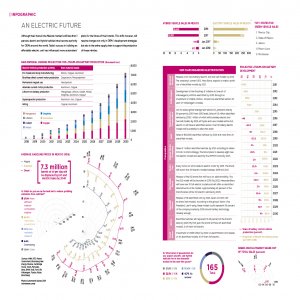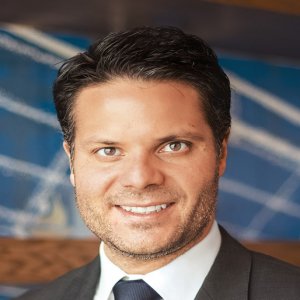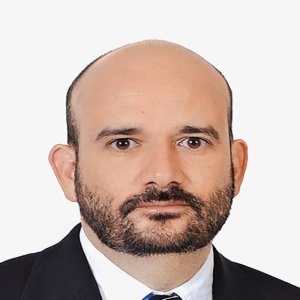Unique Strategies for Strategic Alliances

STORY INLINE POST
Q: What are your growth expectations for Scotiabank considering the deceleration in light-vehicle sales in the domestic market?
A: Scotiabank’s progress is completely in contrast to the industry’s performance. While light-vehicle sales have decreased by 6.6 percent as of February 2017, we have grown our operations year-on-year by almost 40 percent, so we expect 2018 to be a good year for the bank. More than decelerating, the industry is reaching the end of a cycle and the way we have countered this is by strengthening our alliances with growing OEMs. By partnering with strategic companies, we have defied the market trend. Part of our corporate philosophy is to not have bad months just because everyone else does. Our goal is to create a sustainable business for both Scotiabank and its clients.
Q: What is Scotiabank’ strategy regarding the establishment of new corporate alliances?
A: We started building alliances in 2011 when we partnered with Mazda seven years ago. Now, we have learned to understand the needs of OEMs and distribution groups and to see this as a long-term business. This has helped us ditch our mindset as a bank and start thinking as a financing arm, helping companies sell more vehicles and be more profitable while doing so.
Today, we have partnerships with Mazda, Suzuki, Subaru and Renault and we are finalizing negotiations with a French and a Chinese OEM. We have selected our OEM partners carefully so we are not impacted by declines in market share and to maintain relationships with companies that share Scotiabank’s values. These OEMs are focused on improving our clients’ quality of life with high-quality products. They also have a forward-looking strategy regarding hybrid and electric vehicles. If all goes well, we hope to close 2018 with six partnerships.
Q: Why did Scotiabank choose to collaborate with Renault, considering that the OEM has its own financing arm?
A: We are the main financing arm of Mazda, Suzuki and Subaru. With Renault, we are working as a preferred option along with the OEM’s financing branch. The OEM was looking for an alternative company to work with its distribution network and we saw a good business opportunity through this alliance. In this case, the client and the distributor choose which company to work with depending on the client and the region where it operates. We might be acting as a second-best option but that motivates us to work even harder to offer the best financing option to the final customer.
Q: How has Scotiabank adapted its portfolio to comply with the needs of companies from different nationalities and corporate cultures?
A: Our consumer-oriented strategy, coupled with a strong focus on personalized service and a controlled growth projection, is what we offer to all companies regardless of where they come from or how they work. That being said, every OEM has its own strategy in Mexico and our alliance directors have a team dedicated to each of our partners so we can build a unique solution for them. One of our partners, for example, wants to consolidate its position in the market. The others are either looking for growth or to be seen as more daring competitors. Our teams are specialists on the way each company works and we have implants at the OEMs and their distribution networks to incorporate their culture into Scotiabank’s products.
Q: What future do you see for the electric and hybrid-vehicle market and what participation do you want to have in this segment?
A: We are fully committed to a future strategy focused on hybrid and electric vehicles. The industry is still learning how these units will impact the market but just between 2016 and 2017 the market grew 28 percent. In the first months of 2018, electric and hybrid units already accounted for sales of 1,000 units per month, which might seem small when compared to the 1.5 million vehicles sold in 2017 but it is considerable progress for the industry. We continue to innovate in our financial solutions focused exclusively on electric and hybrid models and we are organizing several events called E-Nights where we gather every OEM with an electric-vehicle portfolio under the same roof in five different locations simultaneously across the country. All brands have been pleased to have a place to showcase their products.
We also are lobbying with the government for more incentives for these vehicles and to build proper charging infrastructure. We still see a huge opportunity in the use and exploitation of battery technology. Our projection is that the electric and hybrid-vehicle market will start to consolidate in the next three to five years.
Q: How is Scotiabank innovating in terms of digitalization and how has that impacted the way you interact with clients?
A: Scotiabank is advancing significantly and should be considered a booster of digitalization in the banking segment. More than a year ago we created Digital Factory as a center of technology development focused on digital banking. This area is now in charge of transforming our business from a traditional model to address the mobile world. We take this project seriously and we do not consider it just one more division of Scotiabank. There is no project more important for Scotiabank than the development of our digitalization strategy.
We are already entering the testing phase of our One-Click Financing solution through which clients will get final approval on a loan directly on their phone. New vehicle owners wil simply send their loan application via Internet and less than 10 minutes later they will be able to present the bank’s approval at the dealership. We will begin trials by the end of March 2018 and we expect to have everything ready by March 2019.
Q: How has Scotiabank advanced in the mobility market through its relationship with Piaggio?
A: We wanted to send the message that we care about mobility as a bank. Our priority is cars but we wanted to participate in finding an alternative mobility solution. We began our mobility plan with Piaggio and the company has an aggressive strategy for the next two years. We are learning how the motorcycle market works and now we are ready to open our business to other brands. The first step will be to build a financing strategy with the motorcycle division of one of our strategic partners by the end of 2017. This will allow us to branch out into other market segments.
After consolidating our position with this new brand, the plan is to open a completely new division within the bank focused solely on the motorcycle market and to start working with the biggest OEMs in the country. We are not planning to target the volume market; our goal is to focus on the high-end segment, offering clients the opportunity to acquire an alternative to their vehicle.
Scotiabank is the Canadian bank with the largest international presence. It was founded in Halifax, Nova Scotia, in 1832 and it reached the Mexican market in 1996 in collaboration with Grupo Financiero Inverlat
























